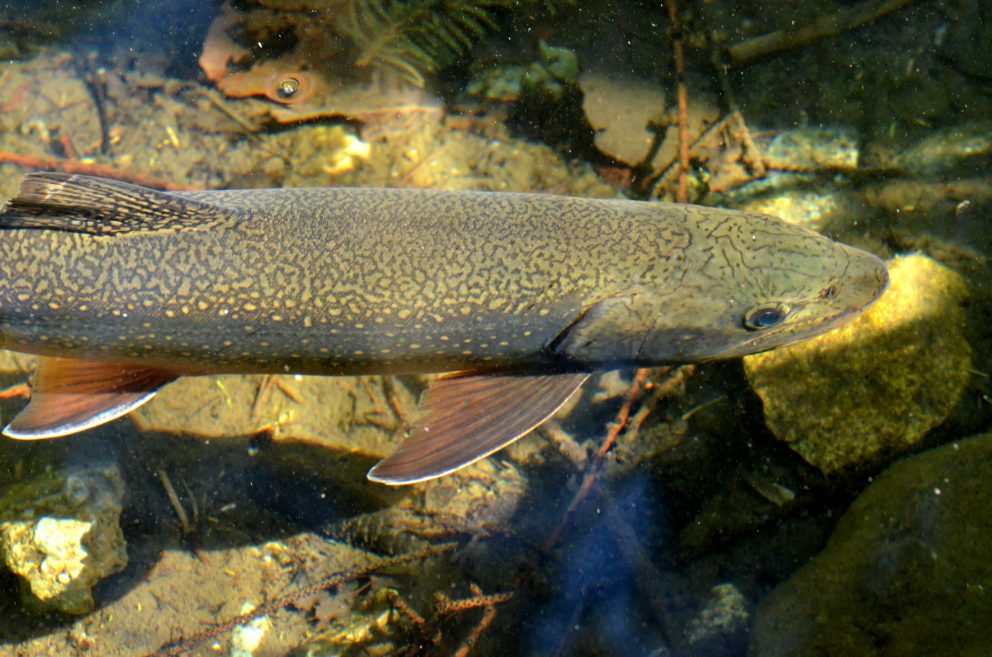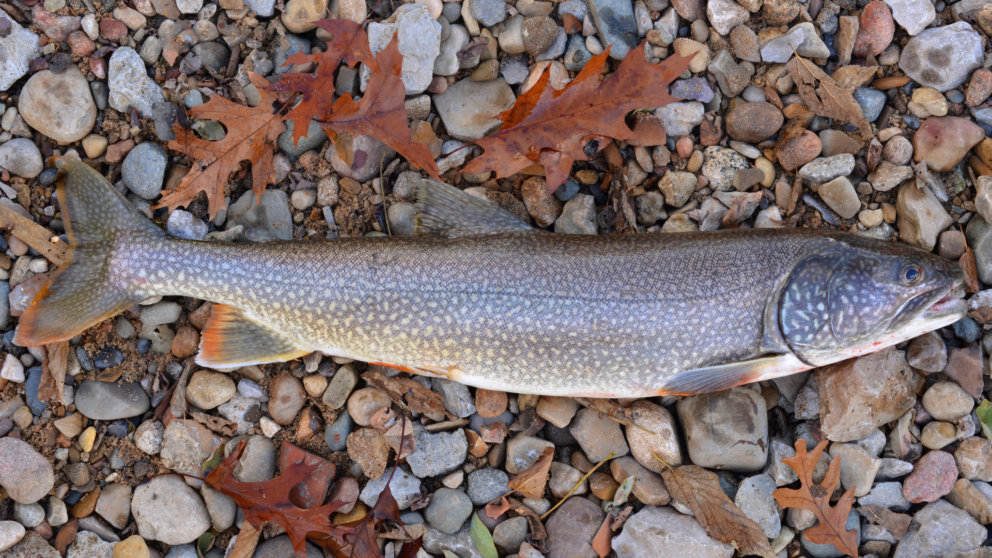- SCIENTIFIC NAME
- Salvelinus namaycush
- CLASSIFICATION
- Fish
- LIFE SPAN
- 12-41 Years
- SIZE
- 4-44” | 3-30lbs
- STATE CONSERVATION STATUS
-
- Unprotected
- FEDERAL CONSERVATION STATUS
- Least Concern
- GAME STATUS
- Game
- Washoe
- Humboldt
- Pershing
- Churchill
- Mineral
- Lyon
- Douglas
- Carson City
- Storey
- Elko
- Lander
- Eureka
- White Pine
- Esmeralda
- Nye
- Lincoln
- Clark
Habitat & Range
Lake Trout, also known as Mackinaw, are native to the northern portion of North America including much of Canada and the Great Lakes region. They are currently found in Lake Tahoe, Liberty and Echo Lakes in the Ruby Mountains of Elko County. Generally found in deep, cold, stratified lakes with the majority of their time spent near the bottom.
Threats
- Commercial Fishing
- Larger Fish
Natural History
The younger Lake Trout will feed on zooplankton and small invertebrates, but their feeding patterns will change to become primarily piscivores as they grow over 2 pounds. Spawning takes place in the fall in silt-free, rocky areas with a depth from just a few feet to 200 feet. With no redd (nest) prepared, the eggs settle between rocks and crevices for the 4 to 5 week incubation period without any protection from the parents. In the lakes of the Great Basin, Lake Trout are usually found at 100 feet or deeper. At Lake Tahoe, there have been reported sightings at depths of 1400 feet.
Fun Facts














